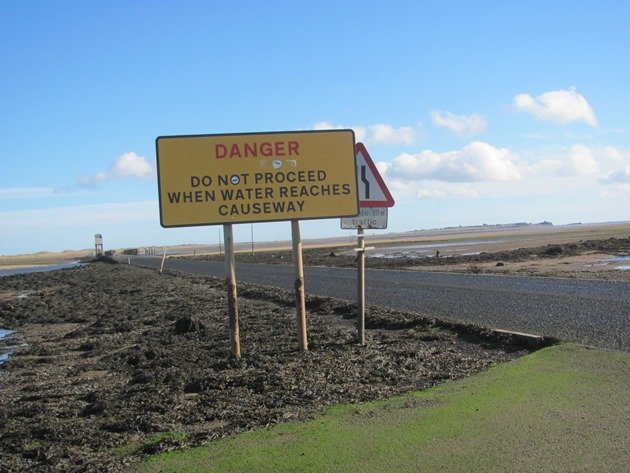
In Broome our lives evolve around the tides, because there is up to ten metres of movement on the largest tides. If you are interested in observing shorebirds at roost or feeding you need to ultimately turn to a tide chart to see where the sea is and if there will be any birds visible! Broome’s tide chart for 2017 is here. If you want to observe the shorebirds roosting along our coastline then it is best to wait until after the high tide and they will be more relaxed and not under pressure to constantly keep moving away from the water’s edge. The downside to this is that they may well be mostly sitting down, so you may not have a view of all their body parts for identification!
In the UK there are several places where it is important to consult the tide charts before heading out and one that we had hoped to visit on our recent visit to the UK was Holy Island on the Northumberland coast. The Holy Island of Lindisfarne is a tidal island on the north-east coast and it is spectacular at any time of year, but in October there are thousands of birds in the area and it is a beautiful place to visit. The Holy Island of Lindisfarne’s history goes back to 6 AD and it is still only inhabited by a small number of people. One of the main attractions for many people is the causeway, which cuts off the island to the mainland when the tide comes in and it is very important to check the tide before you consider going across to the island. The other problem is that the weather can change quite dramatically quite fast and so it is best to allow a few days around the area in case you can’t go over or can go over, but the weather is too wet and or miserable for much birding and you have to get off again before the tide turns! The weather can change quite fast, so you need to be prepared! You may go over as the causeway becomes clear of water and then decide to stay for a very long time, so the tide takes away the road and returns it again or do several shorter trips of a few hours. There is even an option to walk either the causeway or a track in the general direction of the village, but we were more than happy to drive across and have more time for birding! You can’t camp on the island, so we stayed at Budle Bay on the mainland.
Arriving at the causeway late in the afternoon on October 14th last year there were several cars waiting to cross in both directions. Several were impatient and crossed in quite deep water when they could have waited only a matter of a few minutes to cross without very little water on the road. We were content to bird-watch the area on foot and there was plenty to observe.
Holy Island causeway as the tide drops
The skies were full of thousands of Greylag Geese, Pink-footed Geese, Barnacle Geese and Brent Geese on the move and in the shallow water there were already hundreds of Bar-tailed Godwits, Eurasian Oystercatchers, Dunlin and Eurasian Curlew. Ruddy Turnstone, Grey Plover, Common Redshank and Common Greenshank fed along the edge of the causeway at low tide. Even the car park was busy with Common Blackbirds, European Goldfinch, Goldcrests and European Robins.
Thousands of Geese on the move on dusk
Eurasian Curlew
Usually I found Eurasian Wrens impossible to photograph, but add some overcast weather and one appeared rather interested in me for a change!
Eurasian Wren
It only took about fifteen minutes and the causeway was almost clear of water and we could walk across some distance. It is only a single lane, so you do need to be aware of traffic, but there are some good birding opportunities along the causeway. Common Eider were visibly feeding as the water dropped back from the causeway. There were plenty of other ducks present and they included Eurasian Wigeon, Common Shelduck and Tufted Ducks. It was hunting season and the men appeared to be mostly targeting the Eurasian Wigeon.
Causeway as the tide drops on dusk
Common Eider beside the causeway in dull weather!
The following morning we were up early to make a crossing and were delighted to see a Grey Seal lounging around beside the causeway and another actually on the causeway, which soon moved for pedestrians! There were hundreds of Grey Seals between the mainland and the island and every “boulder” on the sand was in fact a seal!
Grey Seal
Crossing to Holy Island via the causeway you arrive at a place called The Snook, where you can walk a trail in search of birds. Unfortunately it is not clearly marked and there have been so many trails put in by people going to each tree in search of rare birds that it is easy to not work out where the exact trail is unless you are on the coast. We saw a flock of Common Starlings near the car park and in fact used them to guide us back from the beach when there was no apparent trail! It worked and we encountered a Horned Lark in the process, so we can’t complain!
The Snook walk trail
Looking back to the mainland from near The Snook when the sun came out!
Driving to Holy Island is no problem once you have worked out when you can cross there and back, but you do need to be aware that you can’t park in the village itself. They have a designated car park for visitors with a nominal charge for 4 hours and it is in fact a great place to bird watch if the weather is not ideal for walking. We observed Northern Lapwings, Redwings, Song Thrush, Fieldfares and European Robins busily feeding in the grassy car park on a wet morning before giving up and returning to the mainland to try again the next day! You will notice the pink area around the causeway on the map below and that is the shooting zone and the green area is the wildlife refuge. The ducks need to take note of this map! We walked the green square trail on Holy Island in bleak cold weather, but it was still a productive walk. A lot of the walk is exposed and so you do need to wrap up for the conditions. Other species we observed around the causeway and Holy Island were Mute Swans, Mallard, Little Egret, Grey Heron, Common Wood Pigeon, Rock Dove, Eurasian Collared Dove, Eurasian Magpie, Common Pheasant, Common Gull, Herring Gull, Great Cormorant, European Shag, Northern Gannet, Dunnock, Blue Tit, Meadow Pipit, Eurasian Skylark, Common Chaffinch and Common Chiffchaff to name a few. A better map is available here. There is also a book available regarding the amazing birds that have been recorded on Holy Island and it adds up to 330 species and they are still counting!
Map showing shooting zone and wildlife zone around the island
Looking at the Lindisfarne Castle as we walked back through the village-the tide was still out!
The causeway really does go right under water when the tide races in and you really do not have any choice other than to wait for it to go back out. Time and tide wait for no man! In case you are wondering about the hut on legs I can tell you it is there in case you can’t read a tide chart! Each month somebody loses their vehicle to the tide when they just can’t read the tide chart or can’t wait for the tide to go out! There’s an example here of one of the vehicle losses last year!
Holy Island causeway as the tide covers it
Just when you thought that was enough to worry about I can tell you there’s even more DANGER! At the car-park there is a trail that many of the hunters use and also birders, but it is risky! If the weather was not challenging enough then add some old military debris and a bit of localised quick sand and I have probably scared you off! This almost seems more dangerous than Australia and all of our deadly creatures!
More danger!
Despite all of the challenges in birding Holy Island in October it is to be thoroughly recommended, but allow plenty of time for the tides and any challenging weather! Apparently October’s weather was mild last year too!
Of course tides are important anywhere along a coastline and this past week has flown by, but we have been walking our beaches and bush-walking inland and topping up the 2017 Year List around Broome!


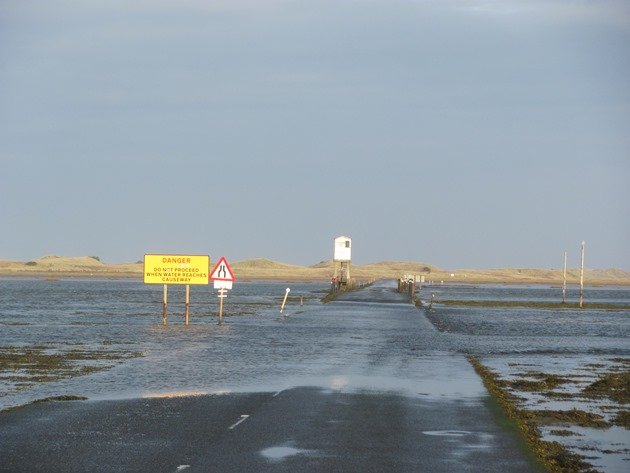
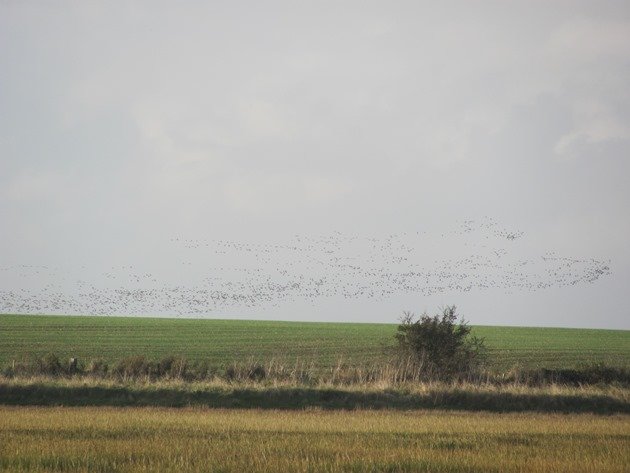
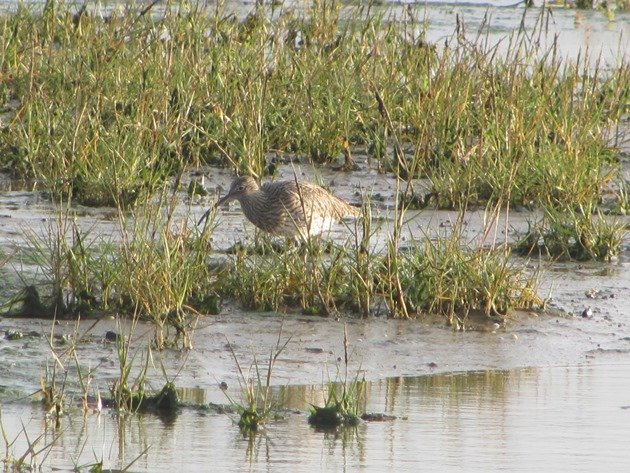
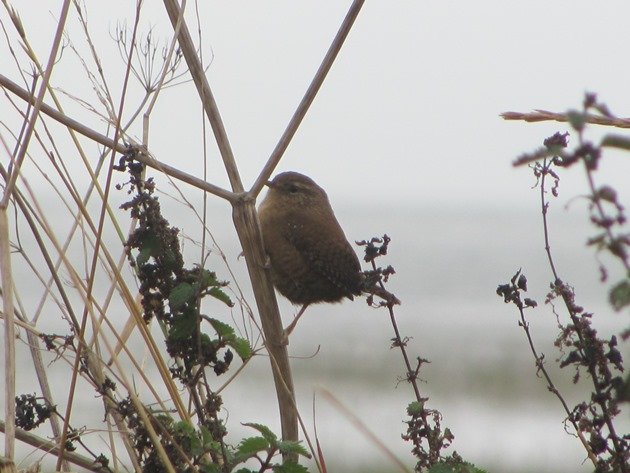
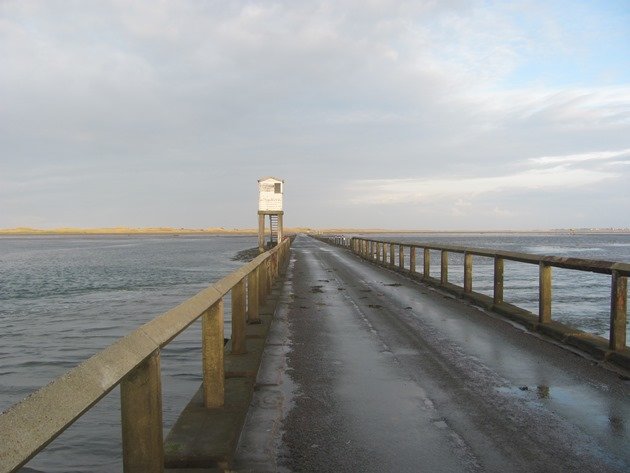
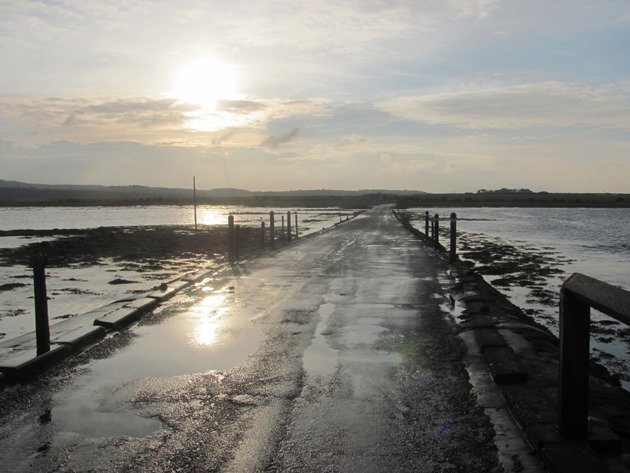
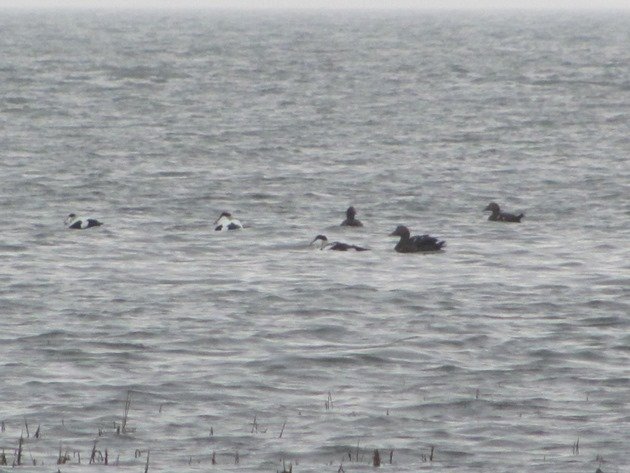

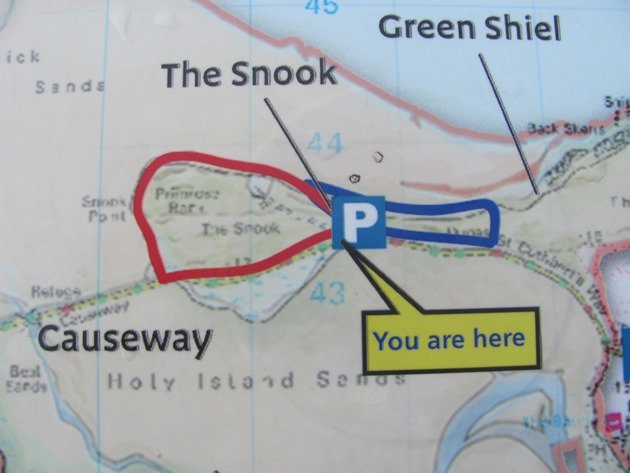
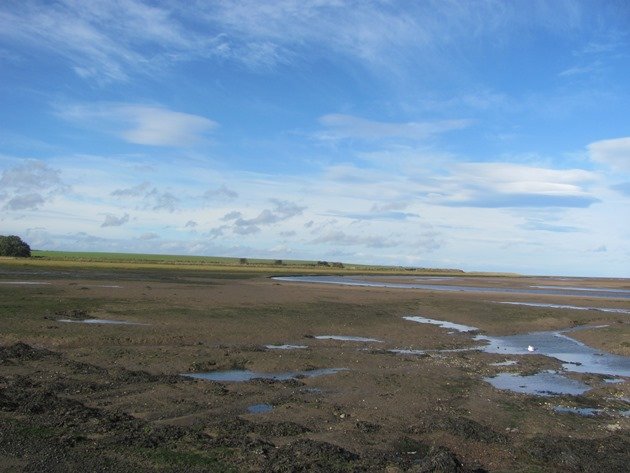
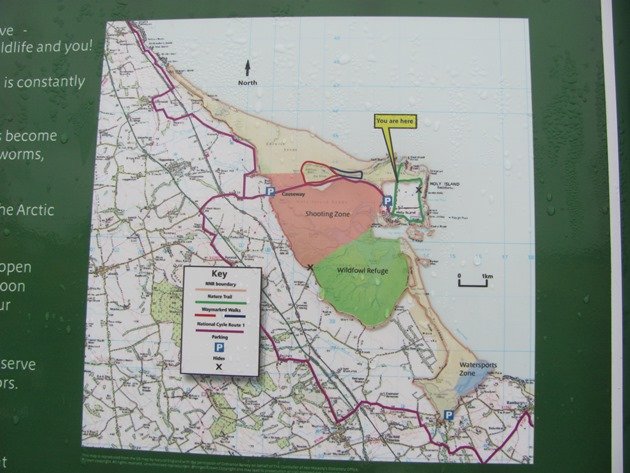
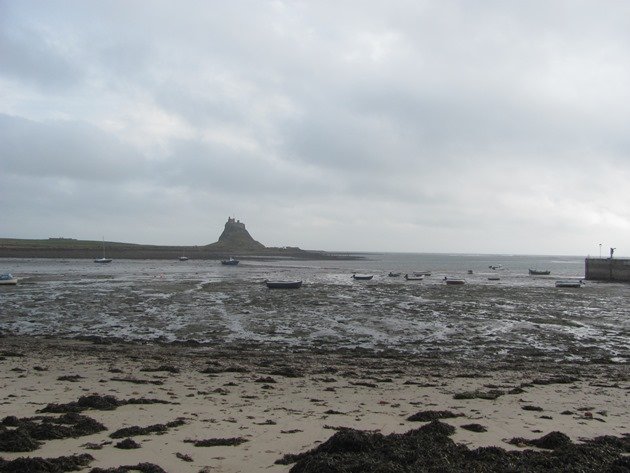
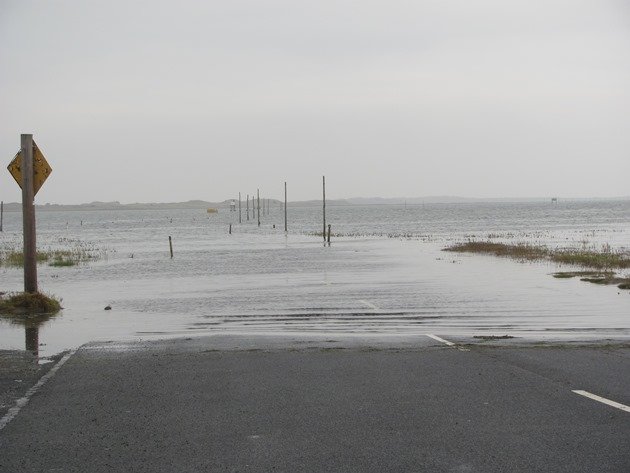
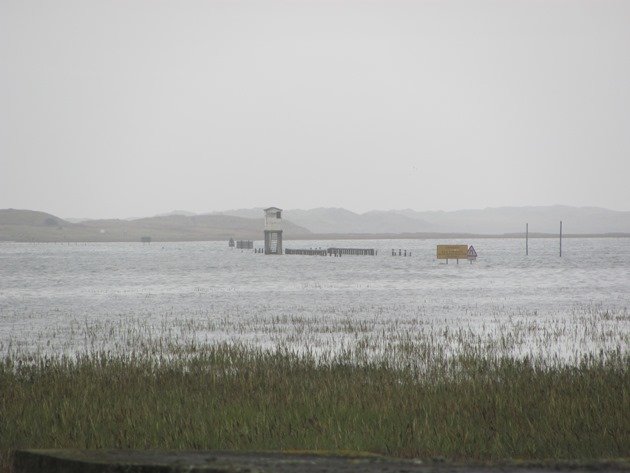
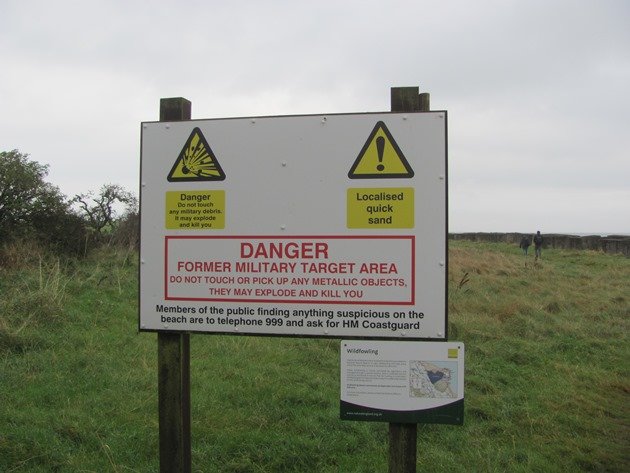











“They may explode and kill you” now there is something you don’t see every day out on a bird hike! What a spectatcular spot though!!
Yes. a lovely island and we are pleased we allowed some time to explore it with the inclement weather and tide restrictions!